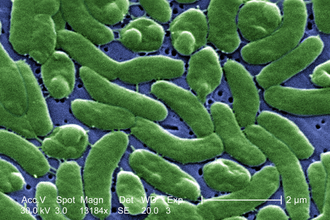Along Florida’s coastline, the summer of 2025 is proving to be anything but reassuring: 11 people have been infected with Vibrio vulnificus, and 4 have already died due to complications caused by this marine bacterium, which can lead to severe tissue damage.
This is not just any infection. Vibrio vulnificus is known as a “flesh-eating bacterium” because, once it enters the body, typically through open wounds exposed to warm seawater or through the consumption of raw shellfish, it can rapidly destroy the surrounding skin tissue, causing a condition known as necrotizing fasciitis. Timely treatment can mean the difference between life and death.
The cases reported this year are spread across several coastal counties, from Bay and Hillsborough on the Gulf Coast to Broward and St. Johns in the southeast and northeast of the state.
According to data from the Centers for Disease Control and Prevention CDC, the U.S. federal public health agency, about 20% of people infected with this microorganism are at risk of dying. The danger increases significantly for more vulnerable individuals those with weakened immune systems, liver disease, or over the age of 65.
Vibrio vulnificus is not new to the scientific community. According to numerous experts, its proliferation follows precise seasonal patterns: water temperatures between May and October create the ideal environment for its growth. What makes the situation more alarming, however, is the impact of climate change.
Antarpreet Jutla, a professor of environmental engineering at the University of Florida, as reported by NBC News, explained that rising ocean temperatures and extreme weather events, such as hurricanes and flooding amplify. the presence of Vibrio in the environment. Last year, after a particularly active hurricane season, 82 cases were reported in the state, many of which were attributed to these events.
Jutla also pointed out that although the southeastern U.S. coast remains the primary habitat for these bacteria, in recent years cases have been reported farther north, including in New York, Connecticut e Maryland.
Vibrio vulnificus is just one of over 200 species belonging to the Vibrio genus. Most are not harmful to humans. However, as noted by Rita Colwell, professor emerita of microbiology at the University of Maryland, approximately 80,000 human infections occur each year, mostly affecting the gastrointestinal system. Only a small portion, between 100 and 200 cases, are linked to V. vulnificus, the most feared due to its aggressive nature.
Symptoms, according to experts, appear quickly: redness, swelling, blistering with a “bull’s-eye” appearance, and sharp pain at the affected area. If not treated in time, the colonization can spread into the bloodstream, leading to sepsis—a potentially fatal condition marked by fever, chills, and dangerously low blood pressure.










